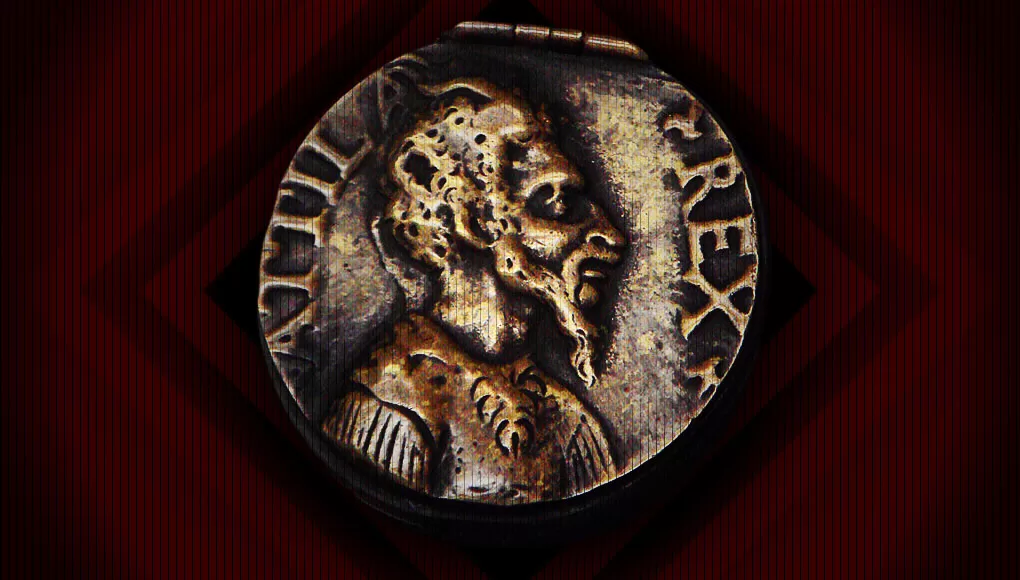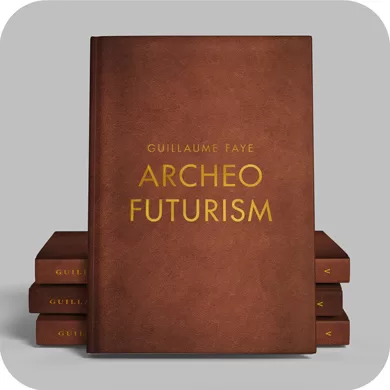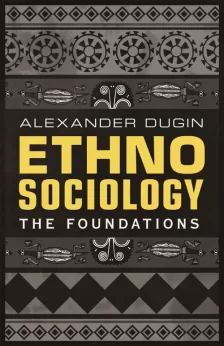The Roman Empire’s aggressive expansionist policy necessitated a flexible definition of what it meant to be ‘Roman’, while recognizing that every amendment had to remain tethered to the rigid notion of inherent Roman superiority over other peoples and cultures. C. R. Whittaker argues that Roman borders were in practice far from fixed, though this seems to me to be a claim firmly rooted in the distortions of critical theory. Whittaker continues:
At the same time as barbarians were being pilloried as a chronic menace to Romanitas, emperors were praised for allowing cultores barbari to pass the frontier and become farmers and soldiers. Barbaritas and Romanitas were not fixed, objective territorial definitions but shifting cultural concepts. … Above all, and notwithstanding the ideology of an imperial barrier separating off barbarian gentes ‘that have sprouted up’ around the provinces … the reality was different. Despite the rhetoric of barbarians ‘howling around the empire on all sides’, or the frontiers bristling with defensive controls … the image of the impermeable dam was constantly and visibly being confused. … The frontiers became less and less distinct culturally and physically.1
Whittaker is confusing the terminal late stages of the empire with its entire chronology, but there is something to his discussion of the popular portrayal of barbarians pounding on Rome’s gates; the use of barbarians – and, more broadly, the Other – can be a profoundly effective tool for social control, certainly, but it was the case with Rome and is still the case now that massing armies really do seek to destroy our way of life and really would would conquer and colonize, just as many other groups have done before. The spectre of the Other, a menace beyond the borders, is a perpetual threat that does not simply cease to exist just because of a period of internal prosperity, though citizens of prosperity in their comfort often become estranged from the idea that there is always real danger lurking just around the corner, or just beyond the border, as the case may be. There is a reason we have borders, not least of which is that they ensure security for clearly demarcated territory. ‘Us and them’, more often than not, is not an artificial construct, but a real feeling among humans unified by specific ties.
The barbarian is antagonistic toward civilization, but we can gain great insights into who we are by considering the barbarian in his three-dimensional form. Attila the Hun, for example, is regarded as an individual responsible for tremendous upheaval, and while this analysis of Attila the Hun is accurate, his presence first on the historical scene, and later as a one-dimensional figure of propaganda has necessitated a closer look at the myth. Attila, like the majority of history’s characters, is a myriad of components based on fact, fiction, and interpretation, often all three at once. Attila is a de-stabilizer, an engine of destruction. His presence calls direct attention to what have previously been the neglected fringes of both the empire in a literal sense and of ideological discourse. Attila is, in fact, capable of allowing (or leading) the margins to come crashing in – again, both as a historical figure and as a literary character and vehicle.
In the classical texts of historians such as Livy, Herodotus, and Tacitus, as well as the poet Juvenal, donning our Leftist lens for a second will allow us to sense ‘proto-racist’ overtones here, but also to discern the seeds of what was to become post-colonial thought by investigating these ‘extra-cultural’ viewpoints – those of disparate ‘barbarian’ tribes, for instance. That this ‘proto-racism’ is really more a highlighting of the barbarian as a legitimate source of interest, a consideration of the Other simply imbued with Roman cultural and ethnic confidence and used as a source of critique and instruction regarding Rome herself, does not pass muster for the Left. In Eric Adler’s formulation:
One can often glean a connection between Roman authors’ xenophobic sentiments and their support for imperial expansion. As such, the application of postcolonial theory to the Roman world has been a fruitful enterprise.2
It certainly takes as a sustained project the crippling of the West’s inheritance. This analysis misses something very crucial, though. The lynch-pin of the Hunnic narrative is the journey of Priscus to the frontier as part of a diplomatic envoy to meet Attila the Hun. Priscus’ account is the only known historical document detailing the Roman perspective on Attila. As an actual source, then, Priscus is vital, since he presents to readers an Attila decidedly more complex than most Roman and subsequent Western depictions otherwise suggest. The reason for this is that people understand concepts better when they are neatly packaged, often in allegory or in singular figures who exhibit specific traits and are thus considered to be ‘definitive’. In this fashion, Attila, along with Genghis Khan, is really two people – an actual historical figure and a repository of the barbarian, a mere abstraction.
Attila – the Scourge of God – and his nomadic Huns have become synonymous with barbarism in Western ideology. Since classical antiquity, ‘The further away from the Mediterranean [one is], the stranger the inhabitants [appear], the more inexplicable their customs, the more chaotic their societies’.3 The Huns, characterized by Roman historians as emerging seemingly from nowhere beginning in the 370s, would have appeared even stranger to the Romans, since they practised a kind of cranial modification whereby an infant’s head would be bound with a wooden board, producing an elongated skull and flattened facial features.4 For Roman historian Ammanius Marcellinus, who was already drawing on received notions of nomades from Greek sources such as Herodotus, the Huns were ‘so hideously ugly and distorted that they could be mistaken for two-legged beasts’.5 Adopting the tonal quality of Ammanius’s Romano-centric worldview, speculating on what might lie out on the Asian steppes beyond Rome’s ring of influence became a timeless tradition of sorts in Europe; the Huns were the latest and most savage iteration of those nomadic tribes that ‘in many ways … were a disquieting inversion of the Greeks [and Romans]’.6
For Adrian Goldsworthy, ‘Attila is one of the few names from antiquity that still prompt instant recognition. … Attila has become the barbarian of the ancient world’.7 Owing perhaps to their sudden appearance, and certainly their unmatched successes against the empire both in the Balkans in the East and on the mountainous fringes of the West – as well as their alien appearance, customs, and military tactics – the Huns and Attila became civilization’s greatest fear. Mike Dash elaborates:
Ancient artists placed great stress on [Attila’s] inhumanity.… Then as now, he seemed the epitome of an Asian steppe nomad: ugly, squat and fearsome, lethal with a bow, interested chiefly in looting and in rape.8
Since propelling massive population movements ahead of their conquests9 and arriving on the fringes of the Roman world in the fourth century, the Huns and their most accomplished leader, Attila, have remained situated in the millennia-old tradition of the sub-human barbarian, with Attila representative of an entire race. ‘An 1894 engraving of Attila from Charles Horne’s Great Men and Famous Women, adapted from an antique medal, depict(s) Attila with horns and goatish physiognomy’.10 Twenty years later, at the onset of World War I, British propaganda would depict the nation’s German adversaries as Huns, emphasizing their ‘barbaric’ qualities.11 Certain members of the Western allies in World War II expressed acute anxiety about the advancing Red Army, likening it to an ‘Asiatic’ horde with dull eyes and strangely shaped heads.12 For the renowned Roman historian Edward Gibbon, Rome was ‘exposed to the rapacious cruelty of the Huns’, while Attila himself was a ‘savage destroyer’ possessed with ‘ferocious pride’.13
It is important for the reader to understand the historical context of the first depictions of Attila and the Huns, for it is this exact historical narrative that European society has been engaging with for centuries. Shifting the focus from Rome out toward the edge of the empire, where Attila’s army sits camped, awaiting Priscus of Panium’s diplomatic envoy, gold tribute, and the return of several political enemies, as both archetypes and real people Priscus and Attila are both equal parts lens, plot vehicle, primary source, and abstraction. Indeed, even with the historical figure of Priscus, it is exceptionally difficult to parse the man and his experiences from the gifted story-teller. As Christopher Kelly says:
Like Ammanius, Priscus wished to present himself as a reliable historian as well as parade his extensive knowledge of classical literature. In the description of the ceremonies before [Attila’s] burial … the killing of the faithful retainers at the graveside of a powerful leader was a reminder that the Huns were nomades. Those who knew their Herodotus would remember that the Scythians buried their dead kings alongside the bodies of their strangled servants. … Priscus’s description could be based on an eyewitness account as well as shaped by his references to classical texts. … It is not always possible to separate hard fact from clever literary fiction.14
Through Priscus we begin to see the deterioration of civilization, a loosening that begins well before he reaches the frontier. Priscus is what would come to be understood as Byzantine (though he concluded his career in Rome proper, we are speaking here of a bit of a grey area between the Eastern and Western Roman Empire and the collapse of the Western half and emergence of a distinct Byzantine Empire) and wrote in Greek, however the origin of his diplomatic envoy (Constantinople) is less important than the reverberations that both preceded and followed the Huns’ emergence on the edges of the empire. Once at the frontier, Priscus confronts numerous other paradoxes that complicate and compromise any hope of making a ‘clean’ distinction between civilized man and barbarian. The dramatization of such self-complication is explored elsewhere, both within and beyond the Roman super-structure, and it serves to show in stark relief what the lack of firm, set borders looks like.
Notions of borders and boundaries are some of our most urgent contemporary concerns. Roman borders were as much ideological as physical.15 Natural impediments such as the Rhine and Danube Rivers served as clear border crossings, and, where absent, man-made structures such as Hadrian’s Wall were erected to stand in their place. In practise, however, even where these landmarks existed, distinctions along the frontier in particular often proved more nebulous. Hadrian’s Wall, for example, cut through the territory of an ethnically similar people, rendering one half ‘strange’ and the other half subjects of Rome. Such are the consequences of empire-building; the empire’s definition of ‘Romanness’ was, by necessity, somewhat flexible, as expansion, settlement, and resettlement were constantly changing the complexion of the Roman population away from its centre; and nowhere was this more visible than on the outer edges of the empire. David J. Mattingly pulls the question of Romanness into suggestive focus:
What did it mean to be ‘Roman’ in Britannia, Africa, and other provinces of the Roman world? At one level the question is a facile one, but it goes to the heart of current debates about the relative degrees of uniformity and diversity present in Roman society. … The highest degree of social conformity occurred at the upper levels of society, especially among those involved in the governance of the empire. The Roman senate and equestrian orders eventually consisted of individuals from most regions of the empire, and these people shared in a metropolitan Roman culture. Yet they were always a small elite.16
The average Briton or African would have been able to feel the trappings of Roman assimilation in terms of public works, governmental structure, taxes, language, and the legal code, essentially the hallmarks of civilization, but one did not simply transcend identity in terms of class based on appearances, and this was even truer in terms of ethnicity and race. A plebeian would have felt an inherent sense of superiority over the slave class and, especially, the barbarian beyond (and eventually within) the empire’s borders, but by the same token, he would have been exposed to daily reminders of his own relative inferiority with respect to the legates, officials, and other members of the patrician class that formed the highest strata of Roman society. Race and ethnicity also often demarcated standing. Pertaining to what Mattingly felt was a paradox, one widespread response was what the modern Left might consider reactive racism – or as Mattingly terms it, ‘protoracism’, an entrenchment of the superiority complex ‘that went deeper than merely being a deep antipathy or fear of foreigners’.17 Mattingly goes further:
Roman writers classified humanity in ways that made a sharp divide between their own innate superiority and often drew on crude stereotypes of the inferiority of the other. … In the Roman world, as in more recent colonial societies, protoracist views about the inferiority of ‘barbarian’ peoples helped to justify war, subjugation, mass murder, enslavement, and exploitation. … It can be suggested that [ethnic identities] were predominantly a feature of the phases of first contact and assimilation of population groups by expanding states. Native ethnic identities became much less in evidence once people had been incorporated into the Roman Empire. Was this perhaps because the long-term interest of the empire was stability, and the protoracist overtones of Rome’s ethnic categories were a strong disincentive for subject peoples to persist in strongly defining their own identity on ethnic lines? It was on the frontiers of the empire that ethnicity tended to endure longest as a meaningful marker of difference.18
What Mattingly identifies as ethnic disincentive is not only the most important aspect of assimilation, it is really the only one that truly matters, particularly as it pertains to cultural expression. This had a practical application from the Roman perspective in the regions that were farthest from central control. To return to the example of Hadrian’s Wall, the impact of this physical barrier is likely to have been felt more keenly on the Roman side than on the other side, which lay beyond their control. This impact is less to do with protection from marauding Picts, and more to do with the psychological aspect, the cordoning off of the other in the ‘wild’ north.19
The Roman elite constructed an ideology within which the patricians were considered as beyond the plebeians, a near-superhuman class.20 They spoke a more formal version of ‘vulgar’ Latin in the West (Greek was spoken in the East) – which became today’s Romance languages – and their customs were more ornate. Nevertheless, these disconsolidating constructs were a product of the perceived necessity to create a strict demarcation separating the ruling class from the ruled, rather than a fundamental difference in characteristics between patricians and plebeians, to say nothing of the barbarians, who were often regarded as another species entirely. We might point to a subsequent example of racial demarcation in the American context. As Thomas Otten states:
Some writers explained this dualism by theorizing … [for example, that] mulattoes were more aggressive than pure blacks because white blood provided enough ambition to overcome the usual black inertia. The by-then familiar image of the tragic mulatto provided another possibility: people of mixed blood are savages at heart, but white blood provides them with an awareness of their own degenerate impulses, making recognition of their mixed racial identity all the more painful. And while some saw a touch of white blood as improving base African stock, others thought even one drop of African blood enough to drag one back into savagery.21
Nicola Terrenato asserts that it is deeply misleading to retroactively assign modern attributes related to imperialism and other trappings of the nation-state to Rome – a valid concern.22The key point here is that virtually every subsequent empire in the West has attached itself to some extent, or mapped itself onto, the Roman timeline. For Manu Makkur, ‘Though over fifteen centuries have passed since the fall of Rome …people continue to associate imperialism with the Roman Empire’.23 History engages with the notion of chronological time, with the appropriation of certain elements in the narrative of the expanding Roman Empire, not only by contemporary empires but empires throughout the intervening fifteen centuries. The United States, the Holy Roman Empire, the Byzantine Empire (as the ultimate Eastern successor of Rome), Great Britain, France, Italy, Germany, and Russia, among others, ‘have all actively drawn upon the “Roman image” at different times’,24 though this use of Rome as source material is not just limited to a search for kinship or defining characteristics.25 The practice of colonialism and imperialism is based as much on action as dogma; dogma drives action and action reflexively amends dogma. Subsequent empires may seek out (or internalize) elements of Roman policy and structure, but just as often many of these elements may already be part of the empire’s practice.
Central to the existence of the state is the individual’s identity as a member of that state. In antiquity, ‘Romanness’, and identification with this category, for Jonathan Conant, ‘could be used in a remarkably flexible manner to foster a sense of similarity (or difference) over time, space, ethnicity, and so forth’.26 Once again, however, we should be wary of imposing modern ideas on antiquity, and as such, should not get carried away by believing that Rome was some kind of multi-cultural utopia with phalanxes of black legionnaires and such. There was a strong cultural core to the structure and execution of the Roman state from Britannia to Egypt, and though what it was to be Roman was, as I’ve shown, fairly flexible, particularly on the margins, there still remained a concrete essence to ‘Romanness’. Faced with the prospect of losing their largest grain-producing provinces to barbarian incursion, ‘Both the African elite and a succession of emperors struggled to ensure that Africa “stay Roman” by actively seeking to ensure the region’s continued integration into the larger Mediterranean world’.27 As the empire began to unravel in the fourth and fifth centuries, the attendant ideological flexibility began to loosen the characteristics of being Roman as case-dependent, but the enterprise ultimately failed. Rome as it was constructed eventually ceased to be. Continues Jonathan Conant, ‘The multiple definitions of Romanness this process produced could (and did) overlap and inform one another, but they were not always mutually reinforcing’.28
The empire’s earlier proselytizing march of civilization would become known, in later centuries, as ‘Romanization’. For David J. Mattingly:
The early enthusiasm for the approach was in part at least conditioned by the involvement of European scholars at the time (late 19th and early 20th centuries) in their own world of colonization and empire. In the circumstances, objectivity was always going to be difficult to maintain and [there existed] a very close association between the scholarly view and the imperial.29
These scholastic investigations were not only tied to imperial practice, but could be used as a justification for said practice. Though Nicola Terrenato rightly cautions us to be wary of fitting modern templates on to ancient ones, for Terrenato, ‘The epoch-making significance of the Roman conquest and … its relevance as a model for modern events … remains unchanged’; and yet, paradoxically, ‘the centrality of Rome in Western culture is a passive one’.30 As Westerners, this is our heritage, and it is vital we truly understand it in all of its complexity. The ideological significance of Rome, much like the very notion of identity in Roman society, has ultimately proven to be subject to seemingly endless revision, but I would actually dispute Terrenato’s claim that the centrality of Rome in Western culture is passive: it is active, central, and foundational, along with its Grecian forebears, Christianity, the Renaissance, and the Age of Enlightenment, for better or worse. The positive aspects of this legacy are being consciously erased by the globalist super-structure, leaving behind only a civilization in negative – an anti-civilization – that can only reflect the distorted ugliness of imperialism, a crushing, soulless neo-liberal imperialism they themselves would deign to foist on all the world’s people.
References
1 C.R. Whittaker, Rome and Its Frontiers: The Dynamics of Empire (London: Routledge, 2004). p. 204.
2 Ibid, p. 175.
3 Christopher Kelly, Attila the Hun: Barbarian Terror and the Fall of the Roman Empire (London: Bodley Head, 2008), p. 21.
4 Nic Fields and Christa Hook, The Hun: Scourge of God AD 375–565 (Oxford: Osprey, 2006), p. 28.
5 Kelly, p. 22.
6 Ibid, pp. 19–22.
7 Adrian Goldsworthy, The Fall of the West (London: Weidenfeld & Nicolson, 2009).
8 Mike Dash, ‘Nice Things to Say About Attila the Hun’, Smithsonian Magazine (3 Feb. 2012).
9 Emmet Scott that has a terrific article that talks about these ‘refugees’: http://gatesofvienna.net/2016/11/the-barbarians-who-sacked-rome-came-into-the-empire-as-refugees/
10 Dash, ‘Attila’.
11 Ibid.
12 Anne Applebaum, Iron Curtain (London: Penguin Books, 2012).
13 Edward Gibbon, The Decline and Fall of the Roman Empire, Volume Two (New York: Modern Library, 1995, originally published 1781), pp. 344–345.
14 Kelly, Attila the Hun, p. 34.
15 Interestingly, most of the work on Rome’s ideological borders has been done in the archaeological field. Ex: https://www.dur.ac.uk/roman.centre/events/recentevents/.
16 David J. Mattingly, Imperialism, Power, and Identity: Experiencing the Roman Empire (Princeton, NJ: Princeton UP, 2011), p. 204.
17 Ibid, p. 212.
18 Ibid, pp. 212–213.
19 Roman accounts of the impact of Hadrian’s Wall are virtually non-existent, but the rapid deterioration of ‘Romanness’ in Britain after the empire’s withdrawal from the region, as opposed to North Africa, lends credence to the theory that a functional, manned wall had as much to do with how Britons perceived themselves as any fundamental differences with the Picts. Archaeological evidence shows no differentiation in the pre-Roman earthen work structures on either side of the wall. Most likely, the Wall was an arbitrary means of border control, set up when the legions could no longer find military success. The Antonine Wall, further north, was abandoned after only twenty years. – From Nick Hodgson’s article in Current Archaeology.
20 Peter Heather, The Fall of the Roman Empire: A New History of Rome and the Barbarians(New York: Oxford UP, 2006).
21 Thomas J. Otten, ‘Pauline Hopkins and the Hidden Self of Race’ ELH, Vol. 59, No. 1 (The Johns Hopkins University Press, Spring 1992), pp. 227-56, at p. 231.
22 Nicola Terrenato, ‘The Deceptive Archetype: Roman Colonialism in Italy and Postcolonial Thought’, in H. Hurst, S. Owen, eds., Ancient Colonizations. Analogy, Similarity, and Difference (London: Duckworth, 2005).
23 Manu Makkur, ‘The Torch Bearer and the Tutor: Prevalent attitudes towards the Roman Empire in Imperial Britain’, Stanford University Journal, Classics (Spring 2006).
24 Ibid.
25 A few of a litany of examples: the classical architecture of Washington, DC; tsar as a Russification of Caesar; Mussolini’s palace; the persistence of Latin (and Greek) in education, thus providing clear class-line delineations (for many years the British officer corps used Latinate lines of poetry as code); the centrality of the Papal States in coronation ceremonies, legitimizing a regent’s rule – the list is, to put it mildly, extensive.
26 Jonathan Conant, Staying Roman: Conquest and Identity in Africa and the Mediterranean, 439-700 (Cambridge: Cambridge UP, 2012), pp. 2–3.
27 Ibid.
28 Ibid.
29 Mattingly, Imperialism, p. 205.
30 Terrenato, ‘The Deceptive Archetype’, p. 62.









